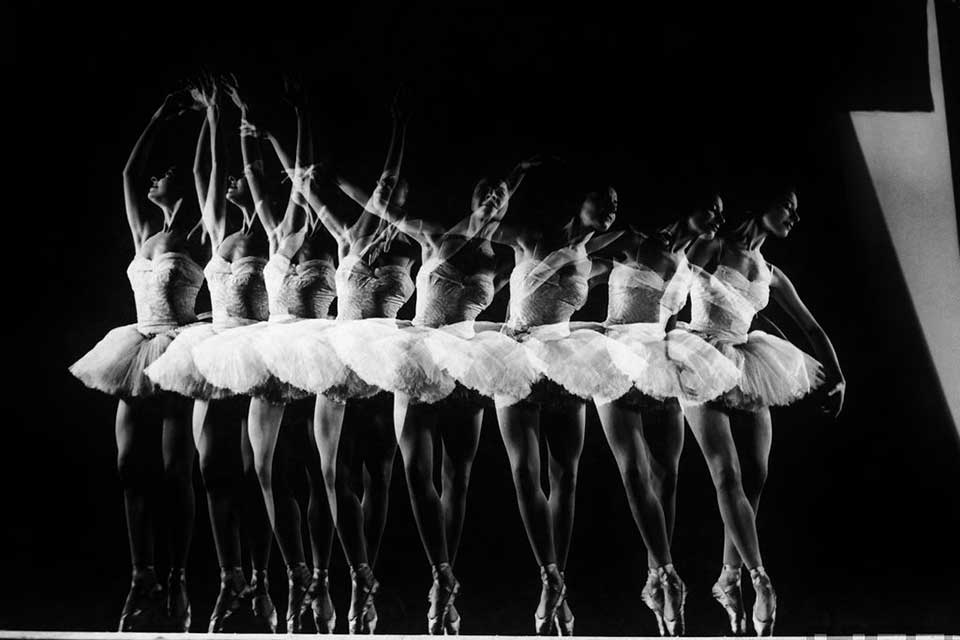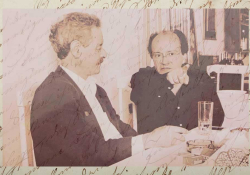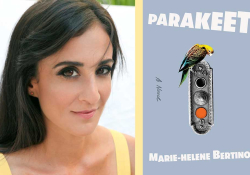Alicia Alonso: The Will to Be Known as a Legend

The news of her death stung. After years of hearing her name, seeing her dance, knowing that she was less and less able to do what she did best in life: being onstage. Now, suddenly, Alicia Alonso has left us. Her death also reminds us of the countless allusions to her near-centenarian age, the jokes—more than a few cruel—about her long presence, and anecdotes that provide a very contrasting view of the human being she was. An image that in the mirror of her appearances as a dancer provides us a sharper view of her as an artist of exceptional talent. One of the daughters of this tumultuous Island who knew how to gain the status of legend and who was for us a symbol in our conversations with those who never even purchased a seat to see her in Carmen, Swan Lake, or Giselle.
Alicia Alonso surpassed herself. As a person, as a genius of dance, as a decades-long legend, in which she became the measure of herself and those who accompanied her in the delusional enterprise of founding a ballet company in Cuba that could compete with well-established ones. Together with brothers Fernando and Alberto Alonso, she achieved this and more. A disciple of Nikolai Yavorski during his tenure at Cuba’s Pro Arte Musical, she grew in her art thanks to teachers and experience, which ranged from musical comedy on Broadway to the American Ballet Theater, in whose seasons she dazzled audiences by her impressive physical ability, the exactness of her line and movements, her unmistakable profile, and her ability to lend a psychological stature to her frankly unusual characters. Like Maria Callas, she was never content to merely follow the norm: she gave onstage that extra something that only genuine talent can give, and she gave to the many roles she danced a personal touch that even today is impossible to ignore. The year 1948 saw the inaugural performance of the Alicia Alonso Ballet, which would eventually become the National Ballet of Cuba—a company in which were crystalized all the quests and questions the Alonsos wanted to add to the cultural landscape of a country to which they gave so much. But she was always—she always wanted to be—the protagonist.
She gave onstage that extra something that only genuine talent can give.

To all this we must add her personal battles. Suffering from problems with her retinas, she underwent operation after operation, never ceasing to dance. In a court where many other talents captivated (we need only mention the four jewels of Cuban Ballet), she was Giselle and other characters, but she was also Myrtha, the fierce queen of the Wilis, who with a single movement of her hand could condemn or save. Committed to the revolution, she danced the revolutionary-themed ballet Avanzada, red flag in hand, on stages and platforms just meters from the trenches. She divorced that gentleman who was Fernando Alonso; and as was the case with many of the company’s dissidents, mentioning him in the presence of her faithful was a faux pas. At the end of the 1980s, her partenaire par excellence, Jorge Esquivel, left the company in pursuit of a personal career that was too late in coming. And now that our prima ballerina assoluta moves on to another dimension, it will soon be time to recount the history of those entrances and exits, not at all unusual, in order to recover all the names that, for so many decades, have made up the Ballet Nacional de Cuba. Wherever they are, they know that having shared a moment with her helped them define themselves, challenge themselves, and ask themselves other questions.
Antony Tudor, Jerome Robbins, Agnes de Mille, and Alberto Méndez are just a few of the names who choreographed for her. And she had exceptional men as dance partners, from Youskevitch and Plisetski, Nureyev and Erik Bruhn. She was Taglioni in her version of the Grand Pas de Quatre, leading a quartet of notable dancers; and Jocasta in Jorge Lefebvre’s Oedipus Rex. She insisted, when her vision began to fail, to continue choreographing. To erase from my mind those pieces of predictable lines, there, on YouTube, are many of her most joyful performances, such as her Giselle with Vladimir Vasiliev, when she was almost sixty years old. “She was born so that Giselle does not die,” a celebrated critic said of her. When she reappeared before the American public, arriving from Castro’s Cuba to the stages she had abandoned, she again had flowers at her feet, as on that mythical night when, replacing Alicia Markova, she forever stole the role of the peasant girl who dies to become a forest spirit. In those moments, she was perfection. It is in the face of that triumph that the hurtful anecdotes of any biography must, if not dissolve, at least be told with the dose of respect and understanding that the most difficult teachings demand from us.
A theater in Havana, the most luxurious and venerable of all, bears her name. She will not see the 500th anniversary of this capital, to which she herself belonged for almost a century. Relic and legend, she was also a symbol, and not only of dance. Her life, which has been recounted with hues of hagiography, can now be narrated from other perspectives. The testimonies of those who loved, respected, and hated her can be amassed so that such an endeavor, which can no longer be delayed, will finally happen. But surely, even when all this happens, the prestige that she labored to achieve, dancing almost blind but consummately beneath a beam of light, will overshadow all that.
A theater in Havana, the most luxurious and venerable of all, bears her name.
I do not have any personal anecdotes about Alicia Alonso. I did not sit with her to ask her questions, as I did with her daughter Laura, or with Fernando, that intelligent and prodigal gentleman. I do have a picture with her, in which we coincided exiting the theater. I remember her dancing the piece by Lefebvre and then being led hand-in-hand by the dancers, to protect her in her blindness, from the audience. Somehow, access to her, jealously protected more and more by her faithful and presumed heirs to power, became increasingly difficult. Her legend entered, before her presence, into every room.
I wonder if those who choose only to hate her are able do those eight consecutive pirouettes that she achieves in one of the recordings of Swan Lake. And if those who speak of her in terms of ecstasy will remember that she was essentially a woman who knew herself only in terms of struggle, in pursuit of the prominence of which she was always so envious, as when she managed to “steal” the role of Carmen from Plisetskaya.
And now it wounds me to know that she will no longer be with us, and that mourning awaits us in her name. It consoles me, in any case, to know that her myth will now belong to us in another way. And with it, too, the person who desired—and achieved—to be known as a legend.
Translation from the Spanish
Editorial note: This piece appeared originally in Spanish in the magazine Tremenda Nota.












